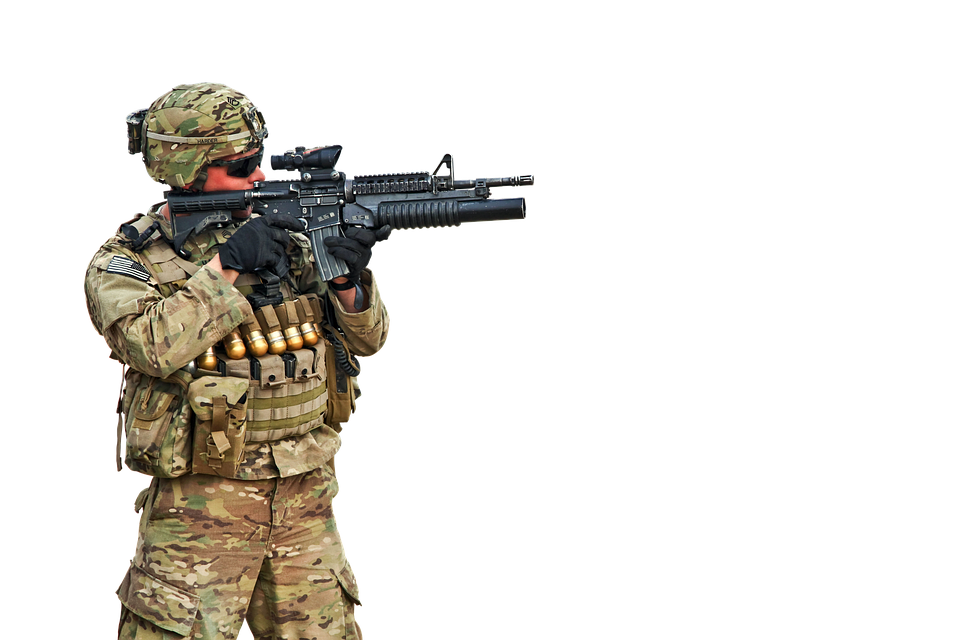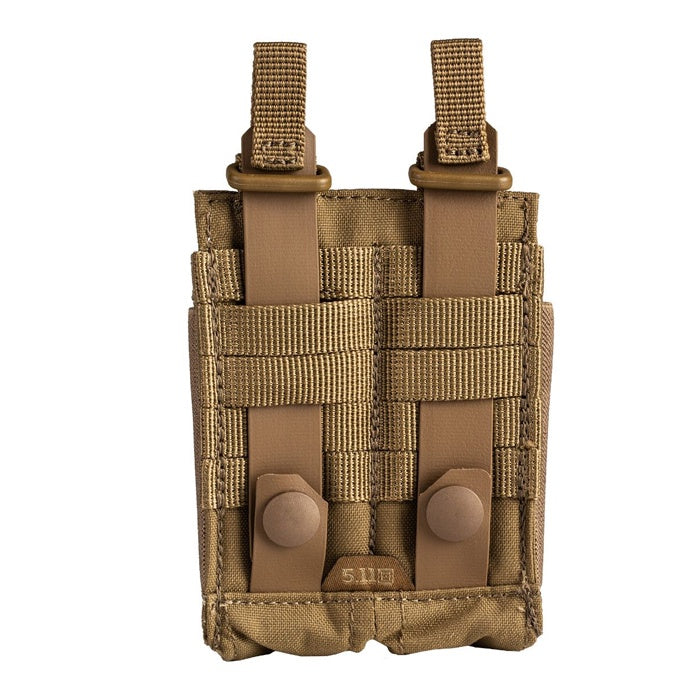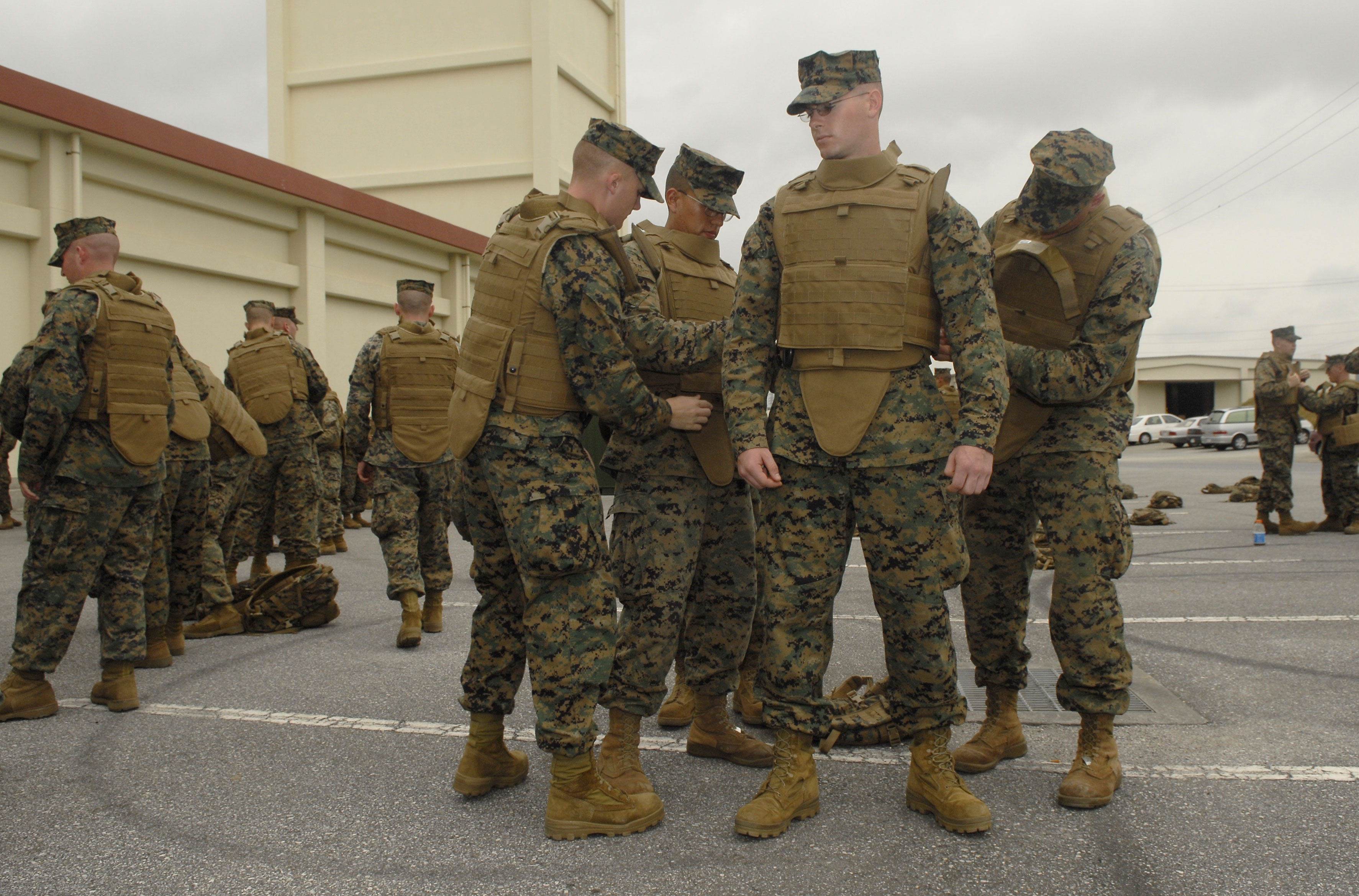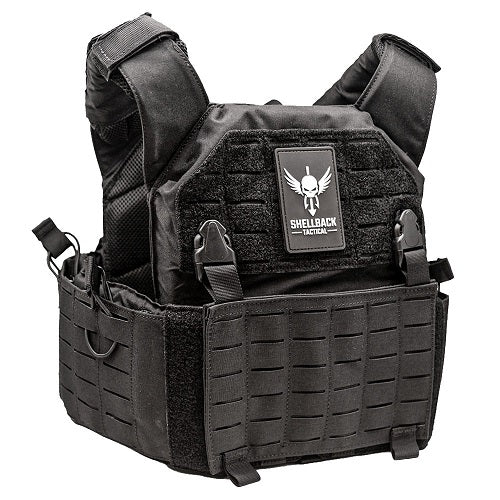It's time to talk plate carriers. They're some of the most popular pieces of ballistic body armor out there for military, law enforcement, and civilians, and they're one of the biggest top-sellers from the Bulletproof Zone body armor collection.
There are so many types and styles of plate carriers that it can seem impossible to know where to begin when considering one for yourself. If you haven't already checked out the top 11 plate carriers for 2021, now is a good time! But what about all the other questions you may have about plate carriers?

In this article, we've got you covered on everything you'll ever need to know about this key piece of bulletproof equipment: what plate carriers are, why you'd want one, the ideal plate carrier setup and maintenance, and showcase some of the best ones we've got in 2023!
TABLE OF CONTENTS
- Plate Carriers - The Basics
- What is a Plate Carrier?
- What are the different uses for a Plate Carrier?
- What are the different parts of a Plate Carrier?
- How much does a Plate Carrier weigh?
- What are the different types of Plate Carriers?
- What is a Plate Carrier made of?
- What are the features of Plate Carriers?
- What is a Concealed Carrier?
- Sizing and Fit
- Plate Carrier Setup, Usage, and Maintenance
- Plate Carrier FAQs
- Featured Plate Carriers
- What is the best Plate Carrier?
PLATE CARRIERS - THE BASICS
WHAT IS A PLATE CARRIER?
A plate carrier (or "PC") is a kind of bulletproof vest, which is a piece of body armor. They're often used by military and law enforcement but can be an excellent addition to any civilian's tactical loadout because of their multiple uses.
WHAT ARE THE DIFFERENT USES FOR A PLATE CARRIER?
Protection
First and foremost, a plate carrier is for protection: it can resist penetration from ammunition. Obviously that's a major boon in combat or any other shooter situation.
PCs don't make you invincible, though. No body armor does that. But they are designed keep you alive long enough to call for medical aid.

LOAD CARRYING
Another important advantage of plate carriers is they allow you to carry your tactical gear on the outside of your body within easy reach.
When bullets are flying, time is everything. If you have to stop and dig in a rucksack for something you need immediately, at best you're taking yourself out of the fight for a moment. At worst, you're taking yourself out of it permanently.
That's why plate carriers are used by the military and law enforcement.
WHAT ARE THE DIFFERENT PARTS OF A PLATE CARRIER?

As the name suggests, a plate carrier consists of plates which are inserted into the pockets of a specially-made carrier vest.

It's important to keep in mind that the protection is all in the plates! When you remove them from the carrier, you're basically left with just a cool-looking vest. But with the plates inserted and the vest positioned correctly on your torso, the vital organs in your chest - heart, lungs, kidneys, and liver -are covered and protected.
Plate carriers also tend to come with a cummerbund that fits around the waist to adjust the carrier's fit and also has gear attachment points.

HOW MUCH DOES A PLATE CARRIER WEIGH?
As you may have guessed, hard armor isn't featherlight by a long shot (we go into why hard body armor is so heavy here), and because plate carriers are designed for the hard stuff, they're going to weigh more than a regular Kevlar vest.
On average, depending on what type of carrier you're working with, you're looking at a range of 15-35 pounds when loaded up with plates and other gear and accessories needed in a tactical mission.
That said, body armor manufacturers are always working on new methods and materials to lighten hard armor without compromising ballistic resistance. Who knows what the future holds?
WHAT ARE THE DIFFERENT TYPES OF PLATE CARRIERS?
You've got four main tiers of PCs in terms of overall size/bulk and load-bearing capability:
- "Slick "- the sleekest end of the spectrum. Concealable and not meant to bear loads. If you have a slick PC with no provisions for pouches, a great option is a chest rig. Chest rigs provide no ballistic resistance themselves, but they're great if you need the pouches, attachment points, etc. of a standard plate carrier.
- Minimalist/low profile- for carrying only essentials. Holds around 10-25 lbs.
- Standard- most carriers fall into this category. Usually the best choice for most tactical work. Holds 20-35 lbs.
- Armor chassis - the biggest and bulkiest PCs for over 35 lbs. of gear.

WHAT IS A PLATE CARRIER MADE OF?
The plates are typically steel, ceramic, polyethylene, or a blend of two or more of these, plus a soft armor material like Kevlar. Each of these materials has its advantages.
Steel is the tried-and-true standard, but ceramic is becoming more widespread, partly because of its lighter weight.
Polyethylene (UHMWPE) is a fun one. It can take multiple hits and is lighter than steel or ceramic, but it's going to cost you a pretty penny more than the others.
The carrier portion of PCs is typically made of materials like nylon or strong denier polyester and doesn't resist bullets.
WHAT ARE THE FEATURES OF PLATE CARRIERS?
- High NIJ protection levels

Plate carriers are made for protection against rifle fire. How that plays out in the language of National Institute of Justice (NIJ) Protection Level Ratings is this: NIJ Level III, NIJ Level IV, or special armor rating III+.
That means hard armor plate carriers can handle anything Level IIA to Level IIIA can handle, plus the literal big guns.
- Scalable protection
Plate carriers are generally scalable. This means you can raise or lower the level of protection they provide by switching out for armor plates of different NIJ protection levels.
Let's say your primary plates are NIJ Level III, but you're engaging in a tactical mission that might present the threat of green tips (M855) or M193. In that case, you could switch out for III+ plates.
Also, with carrier vests, there's the option of using soft armor backing in conjunction with your regular hard armor plates for added protection.
- Modularity

Besides the advanced performance levels of plate carriers, modularity is perhaps the second biggest attraction cited by fans.
"Modular" means you can attach an array of pouches, accessories, and other tactical gear to your carrier if it features a Modular Lightweight Load-carrying Equipment, AKA MOLLE (pronounced "Molly") system. Additional back panels are also an option with a MOLLE system. Back panels let you attach and carry things like a water bladder, gas mask, or any other gear you may need for a mission.
What gives MOLLE gear its load bearing magic is PALS. PALS stands for "pouch attachment ladder system," which is a heavy-duty nylon webbing grid stitched across body armor, backpacks, and other tactical items.
Check out the PALS on this Condor MOPC plate carrier!
Ace Link Armor Skeletac Back MOLLE Panel
WHAT IS THE DIFFERENCE BETWEEN A PLATE CARRIER AND A BULLETPROOF VEST?

Plate carriers are different from soft body armor vests (AKA "composite body armor" or "Kevlar vests") in several ways. Generally, compared to PCs, Kevlar vests are:
- Lighter
With soft body armor vests, expect an average weight of only 3 to 5 lbs.
- Not modular
MOLLE webbing is not a feature of regular Kevlar vests, though some concealed carriers come with an optional MOLLE system you can attach and remove.
- Rated for handgun protection - not rifles
Kevlar vests run from NIJ IIA to IIIA. These protection levels cover the full range of handgun threats.
- Concealable
EnGarde Deluxe Concealable Carrier + IIIA Bulletproof and Stab Proof MT-PRO Panel
Hard armor PCs goes over your clothes, making them what we call overt armor. But Kevlar vests or concealed carriers are able to work as covert protection: virtually invisible beneath a shirt. These kinds of vests are usually made with moisture-wicking fabrics that are okay to get sweaty.
A plate carrier isn't really able to be hidden while you're wearing it. You could try, but even if you didn't look like you were smuggling two televisions under your shirt, you'd get really hot really fast. Your carrier would also get sweaty that close to your skin, and that's not good for the fabric.
The Marines in the picture below are wearing a plate carrier (the Modular Tactical Vest, or MTV, to be exact), and if you compare its profile to that of the concealed carrier pictured above, you'll see the MTV's shoulder area is bulkier and the design less sleek.
That's because it's made for combat, not concealment.

PLATE CARRIER OR KEVLAR VEST? OUR PRO TIPS:
- If you need rifle protection or have a rifle yourself, go for the hard armor plate carrier. NIJ III or III+ would probably do the trick. Level IV could suffice, too, but make yourself familiar with the differences between NIJ III and NIJ IV armor: IV isn't necessarily better than III.
- If you're only looking for general protection against handguns, go for a Kevlar vest or a concealed carrier.
- If scalability is at all important to you, get a hard armor plate carrier vest.
- If you're doing tactical work and need to carry extra equipment or accessories such as placards, mag pouches or water, get either a plate carrier or - if the threat of rifles isn't a concern - a concealed carrier you can attach a MOLLE system to.
- If you just need to wear the vest for general civilian safety or for work and have no need for attachment points on your vest, get a concealed carrier or a soft Kevlar vest.
- If mobility and speed are prioritized in your tactical mission, consider a Kevlar vest over a plate carrier. Otherwise, look for the most lightweight plate carrier you can find, and make sure you know the end weight once the carrier is loaded with plates and all your other gear.
WHAT IS A CONCEALED CARRIER?
A concealed carrier is the soft armor version of a plate carrier. They work like plate carriers except you secure ballistic soft armor inserts in the carrier vest's pockets.
SPARTAN ARMOR LEVEL IIIA SOFT BODY ARMOR AND DL CONCEALED PLATE CARRIER
SHOULD I GET A CONCEALED CARRIER OR A CONCEALABLE BULLETPROOF VEST?
For any of you that need to hide your body armor under clothes, we've already got some helpful info for on how to choose a concealable bulletproof vest.
Long story short, it mostly boils down to preference.
But also keep in mind that these concealed carriers are scalable. If you sometimes, but don't always, need protection against handguns up to a .44 Magnum (Level IIIA), you could swap out those slightly heavier soft armor plates for a lower protection level like Level II.
SIZING AND FIT

WHAT SIZE PLATE CARRIER DO I NEED?
Here's the rule of thumb for plate carrier sizing: it's the size of your armor plate that tells you what size carrier to get. The size you wear in a t-shirt doesn't matter.
If you already have a plate, choose the carrier size that supports that plate. When browsing carriers, pay attention to that manufacturer's sizing specs. They'll tell you exactly what size plates work in a Small, Medium, or Large carrier of that model.
If you don't own plates yet, get the size plate you need, and then choose the size of your carrier based on that.
Don't oversize. There's an idea going around that you should size up on your plate carrier - get a larger size than you need in order to give yourself more coverage.
Don't do that. You'll weigh yourself down with extra plate and material. Good luck slogging long distances with a burden made for a person of a different size. Also, your shooting stance will take you longer to get into, which can have obvious repercussions.
STANDARD PLATE SIZE IS 10 X 12 IN.
It could be helpful to know that the unofficial standard size for non-military plates is 10 X 12 inches. That normally corresponds to size Medium carriers in most brands.
But what if that 10 by 12 inch plate isn't right for your body?
That brings us to the big question:
WHAT SIZE PLATE DO I NEED?
We've already got you covered on this question and everything else you need to know about ballistic plates, but long story short: you need a plate size that will cover your vital organs--heart, lungs, liver, kidneys.
That means you need to know your own chest height measurement, and to do that, you'll need a good old soft tape measure.

HOW SHOULD A PLATE CARRIER FIT?
That red zone in the graphic below is where you want to position your armor plate - right over the vital organs. If a bullet finds its way into any one of those, there's essentially no chance of survival.
To achieve this, you want two fingers' width between the front plate pocket and your collarbone.
The plate also needs to fit comfortably, letting you move your arms freely so you can get into shooting stance, grab gear, and pull out your sidearm (if you're using one) without a hitch.
A common mistake is positioning the plate too low so that it covers the belly and leaves far too much of the delicate upper chest exposed.
Don't do that. A gunshot to the lower abdomen, while not ideal, is generally survivable. Not so for the upper chest.
DO I NEED SIDE PLATES?

Probably not, though you'll never really know if you did need them until you get shot in the side.
In all seriousness, side plates do provide lateral protection, but they add a lot of weight and bulk. For any scenario where you need mobility, they're going to hamper you. And good luck getting up out of prone rapidly if you happen to be wearing side plates and other gear.
Side plates are good to have in situations where you expect to be sitting more than running - guarding a convoy, for example. They can also be useful in short tactical scenarios that don't require agility and speed, but again, you won't know you needed to be agile until it's too late.
PLATE CARRIER SETUP, USAGE, AND MAINTENANCE

SET UP
HOW DO I SET UP A PLATE CARRIER?
Knowing how to set up your plate carrier is the key to getting the most out of it.
Some tips are:
- Position important gear up front.
- Have front pouches for magazines.
- Bring only what you need, and make sure you don't have to look down at your gear while reaching for it.
- Distribute weight at the center.
- Keep your shoulder area clean.
- Ideally, keep pistol magazines on gun belt --not vest-- and within easy reach.
- Tac-light carrier can go to right of First Aid Kit (FAK) or down below armpit line.
HOW DO I TAKE PLATES IN AND OUT OF A PLATE CARRIER?
Plate carriers are designed to be pretty easy to fit armor into. You'll find it similar to putting a laptop or tablet in a soft case.
This video illustrates how to load up an AR500 Armor Testudo Gen 2.0 Plate Carrier.
The Testudo 2.0 is a bottom-loading PC, and that's the standard for most carriers nowadays. There may be some slight differences in armor pocket design between manufacturers, but nothing so drastic that you'll be left with no clue how to proceed.
HOW DO I ADJUST A PLATE CARRIER?
The shoulder straps and cummerbund are the ticket when it comes to adjusting your PC.
- Position your plate on your chest where it needs to go.
- Keeping the plate in its correct position, adjust shoulder straps so they're balanced on shoulders right in the middle between front and back. Using both hands, hold one side of the strap with one hand and tighten with the other.
- Adjust cummerbund on waist. You should feel the pressure of it constantly, but it shouldn't be too tight. When you hunch forward and cave in your chest it should feel a little loose, and when you take a big breath it should feel a little tight.
USAGE

WHAT SHOULD GO IN MY LOADOUT?
This depends on your tactical mission, but generally:
ON THE FRONT
- mag pouches (Here are the top 9 best mag pouches for plate carriers). - Try to avoid "doubling up" as much as you possibly can because the more front gear you have, the harder it is to lay in a prone position behind low cover.
ON THE BACK
- extra magazines
- a radio - this position is debatable. Some swear by the front non-dominant side of the PC.
- IFAK /other medical equipment -choose a spot both hands can easily access. Make sure tourniquets are easily reachable.
- hydration system - water bladder, canteen, whatever floats your boat.
HOW DO I MOVE AROUND IN A PLATE CARRIER?
The way to move in a plate carrier is ideally the way you move when you're not wearing one.
With your armor on, you should be able to access your first line gear, get into shooting position, reach your rifle sling, and move as fast as you need to.
To make that happen, go out and train with your full loadout. Do what you normally do. Notice anything that slows you down, holds you back, or otherwise interrupts muscle memory.
Make sure to practice from a low position to ensure the gear doesn't get in your way. Practice shooting on the move to make sure it doesn't shift around. If you're also using a handgun, practice transitioning from rifle to handgun to check that the armor doesn't hinder your movements.

MAINTENANCE
HOW DO I MAINTAIN A PLATE CARRIER?
Proper cleaning and storing of your protective gear is the secret to maintenance. The main thing is to read the manufacturer's label so that you don't do something damaging to your PC that voids your warranty and degrades the materials.
General tips:
- Both ceramic and steel plates can be wiped with a damp cloth.
- Bleach and dry-cleaning are a major nope for the carrier.
- Steel plates can be stored sitting vertically. Ceramic can lay down, but don't put anything on top of them.
- Hanging your fully loaded vest with a special tough hanger is an option, but be aware this can stretch out your carrier over time and that laying flat is safer.
PLATE CARRIER FAQS
WHAT PLATE CARRIER DOES THE US MILITARY USE?
Different branches of the U.S. Armed Forces use different PCs depending on mission requirements. Military body armor is always in development as carriers are constantly being improved in terms of weight and level of protection.

Army:
- Improved Outer Tactical Vest (IOTV) - improvement on and replacement for Outer Tactical Vest (OTV)
- Soldier Plate Carrier System (SPCS) - lighter alternative to IOTV

USMC BRIGADIER GENERAL WEARING A SCALABLE PLATE CARRIER IN AFGHANISTAN IN 2011.
Marine Corps:
- Modular Tactical Vest (MTV) - designed to improve on Interceptor Body Armor (IBA)
- Scalable Plate Carrier (SPC) - lighter alternative to MTV
ARE PLATE CARRIERS LEGAL?
Yes, PCs are legal for American citizens without felony convictions - even with plates inside. Laws can vary by state, though, so familiarize yourself with what's allowed in your neck of the country.
CAN I PUT HARD ARMOR PLATES IN A CONCEALABLE CARRIER VEST DESIGNED FOR SOFT ARMOR PANELS?
Yes, IF that particular model explicitly accepts both hard and soft armor, but otherwise not recommended.
Hard armor plates are rigid where soft is flexible, and they're thicker and bulkier. Even if you can fit the plate in there, a carrier made for soft armor isn't guaranteed to hold that kind of load. If you purchase one, you should buy soft armor panels to go in it if the carrier and body armor aren't sold as a set.
That said, certain manufacturers produce some carriers that accept both soft and hard armor. Bulletsafe and Spartan Armor Systems are two such brands.
The best bet is to always check with the manufacturer or vendor, and don't try to put hard armor in a soft armor carrier unless you get a clear okay that that particular vest works with both.
FEATURED PLATE CARRIERS
Time for some gems from our collection! These PCs range from minimalist to standard and all feature MOLLE webbing.
AR500 ARMOR TESTUDO GEN 2.0 PLATE CARRIER
Right out of the box, the Testudo is a durable, all-inclusive, maximum coverage PC adjustable to both large or medium body types. Plenty of PALS covered in Velcro for versatility and padded inner lining and shoulder straps for comfort.
SHELLBACK TACTICAL RAMPAGE 2.0 PLATE CARRIER
Lightweight, ready for combat, and built to last, the Shellback Tactical Rampage is what you're looking for if comfort, sleekness, and modularity are your priorities.
AR500 ARMOR VERITAS™ PLATE CARRIER
The Veritas is the Testudo's minimalist brother: a low-profile, comfortable PC with great modularity and the rugged durability of any AR500 product.
SPARTAN ARMOR SYSTEMS LIGHTWEIGHT SHOOTERS CUT PLATE CARRIER
Spartan Armor Systems has another winner with this shooters cut PC: lightweight but protective and easily adjustable from size medium to XL , making it perfect for law enforcement agencies or any situation where carriers get swapped.
LBX TACTICAL ARMATUS II PLATE CARRIER
The LBX Armatus II Plate Carrier is low-profile and customizable with different panels depending on your needs - a fast-clip front panel, triple M4 Panel, and removable modular back panel.
CONDOR MODULAR OPERATOR PLATE CARRIER
Condor has created a comfortable PC with a unique cummerbund featuring integrated soft armor side plate-compatible pockets.
CHASE TACTICAL LIGHTWEIGHT OPERATIONAL PLATE CARRIER (LOPC)
The Chase LOPC is a dependable, lightweight PC set up for comfort and modularity with built-in padded, fully-adjustable shoulder straps with both nylon and elastic webbing for mounting an array of tactical equipment.
WHAT IS THE BEST PLATE CARRIER?
The best carrier is the one that suits your needs. If you expect rifle fire rounds to fly, you'll want a plate carrier. If your mission's priority is concealment over rifle protection, a concealed carrier should be what you end up wearing.
Load-bearing capability is also important. If you're anticipating a loadout in the 20-35 lbs. range, a standard PC should be fine. Less than that, and you might check out the minimalist carriers.
Beyond that, look for quality nylon that won't tear, a MOLLE system, adjustable cummerbunds, extendable drag handles for emergency extraction, and one-handed quick release for better agility. Once you've found the carrier for you, load it up with the plates that suit your needs.
Need some help choosing a plate carrier? Contact us with a question!












